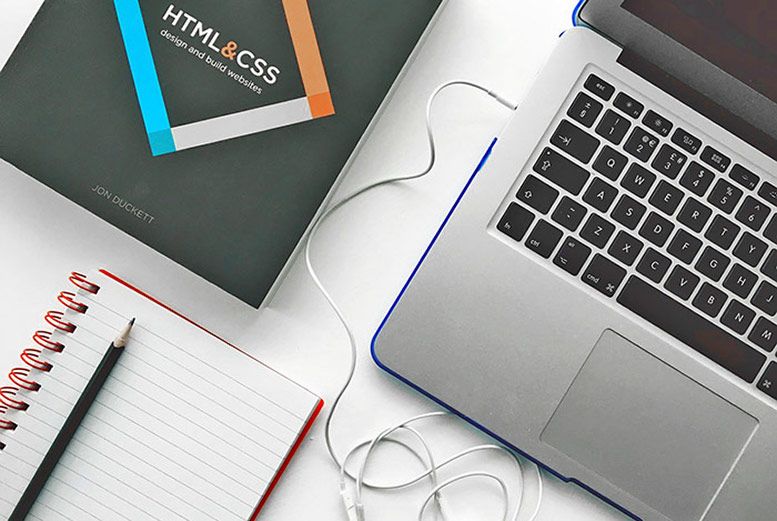
10 Things You Need to Know About Web Design and Development
Starting out in the world of website design may at first seem daunting however it needn’t be.
Here is a list of the top ten things you might want to consider when making that move to set up your first website:
1 The Purpose
Ask yourself why you need a website. What objectives do you hope to achieve? Who is your target audience? The answers to these questions will ultimately influence the design and content of your website.
Understanding the purpose of your website is a key first step, but once you've answered these questions, it's time to move on to the practical side of things. Many people are initially daunted by the technicalities of website creation. However, with the plethora of resources available today, anyone can learn how to create a website from scratch. This process can be surprisingly simple and rewarding if you equip yourself with the right knowledge and tools.
GET A WEBSITE Only £10 per month
2 Choosing a Domain
The domain name is the unique name that will identify your website therefore it should be memorable and short. If it is difficult to type then there is more chance of your potential visitors getting it wrong. Domain names containing numbers and hyphens are also a bad idea. You may want to choose a keyword that is relevant to your business or target area. Also selecting the right domain registrar is another important aspect, things to consider include reputability and that there are no hidden costs later on.
3 Choosing a Web Host
Understanding your hosting requirements is one of the first steps in deciding which hosting company you would like to go with. Think about what kind of website you want to host if it needs special software, perhaps it is an eCommerce website, and what volume of traffic you anticipate. Moving on with setting up possibly a shared hosting account to start out with, the utmost important aspect is uptime. It is pertinent that your website is hosted on a reliable server with stable connections as downtime can be disastrous.
You would also benefit from an easy-to-use control panel and the ability to upgrade to a dedicated server, should the need ever arise. Although the more traditional methods of customer support by telephone and email may be preferred by some, we would also recommend choosing a hosting company that offers 24/7 live chat support to receive instant help and advice in matters of urgency.
4 Get Responsive
In this day and age, more people are browsing the Internet on their smartphones than ever before. A responsive design means that your website is mobile-friendly and will automatically re-size to fit whichever screen on which it’s being viewed.
GET AN ECOMMERCE WEBSITE Only £20 per month
5 Great Content
To keep up the quality of your website, the content needs to be up-to-date and engaging. Viewers tend to like small but informative blocks of text with plenty of eye-catching images or photos. Relevant, well-written, shareable content will drive traffic to your site and improve its search engine ranking. It’s also a good idea to look out for any broken links that may occur over time. Furthermore, all content should be original and not taken from other websites which could cause a breach of copyright.

6 Layout
The website should have a clean, appealing design that is easy to navigate and draws attention to your product or content. A professionally designed website that is easy on the eye and attractive will not only give your viewers a positive user experience but will also have a positive impact on the image of your company or service.
The correct use of colours will also give a good impression to your visitors and selecting a colour scheme to suit your target audience should not be underestimated. The colours used in your logo design will likely be used throughout the rest of your website. Good web design is not just about aesthetics but also has a lot to do with usability and navigation.
7 Features and Functionality
From an online contact form with a captcha test to avert spam, to embedded videos, social media buttons, or a complex shopping cart system with an integrated payment gateway, it’s important to figure out what you need in terms of functionality before going ahead with the design to save you having to go back at a later date and make major, and quite possibly costly, adjustments. Using tools to help you with the reduction of page load time such Toptal JavaScript Minifier & Compressor tool will make your work easier."
8 Search Engine Optimization (SEO)
There is no use in having even the most professionally designed website if no one can find it. Your website needs to rank high in search engines and there are several ways this can be achieved. From writing your own high-quality, original content to hiring an SEO specialist, and from social media integration to offsite customer reviews and testimonials, there are many aspects of optimization that cannot be ignored if you want your website to be a success.
9 Site maintenance
A content management system or CMS is what you need to maintain your website and keep it up to date with ease once it is up and running. It is a web-based control panel at the rear end of your website that enables you to add and remove content such as images and text, by yourself from wherever you may be at the time.
10 Analytics
By following analytics, you can know how much traffic your website is getting and where it is coming from. Using an online tool such as Google Analytics to deliver this data will enable you to strategize and cater to frequent visitors, attract new ones and improve your website’s overall performance.















COMMENTS
nice post. best service available here . I got lot of assistance from this website